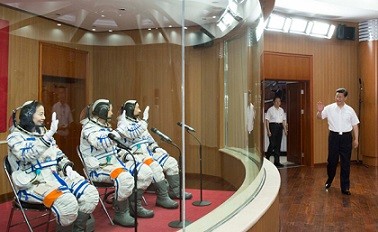China is set to conduct more than 20 space missions this year, which include a manned one and the maiden flights of two rockets, the nation's major space contractor said.
According to China Aerospace Science and Technology Corp., it plans to launch the Tiangong 2 space laboratory and the Shenzhou XI manned spacecraft. The contractor said it will also test-fly the Long March 5 and Long March 7 rockets.
China Daily reported that two satellites will be launched by the country for the domestically developed Beidou Navigation Satellite System, and the Gaofen 3 for the Gaofen High-Resolution (HD) Earth Observation System.
In a statement published in its website, the contractor said "this year will see more than 20 space launches, the most missions in a single year."
In addition, the company said that it will launch a communications satellite for Belarus, the first time that China has exported a communications satellite to Europe.
The Tiangong 2 space laboratory is also scheduled for launching in the first half of the year to test life support and space rendezvous technologies for the country's future space station, the report said.
After Tiangong 2, a Long March 2F rocket will launch the Shenzhou XI spacecraft to send astronauts to and dock with the space laboratory.
According to government sources, China will also launch the core module of its space station in 2018 to research engineering issues and to test related technologies. The station is expected to become fully operational by 2022.
Since all the space projects are proceeding well, the development of the next-generation carrier rockets is now being finalized by China Aerospace Science and Technology Corp.
Final tests on the Long March 5, the heaviest and most technologically challenging member of the nation's rocket family, is being undertaken by the company's China Academy of Launch Vehicle Technology.
The report added that the academy has increased its annual manufacturing capacity from a maximum of eight rockets to up to 20 to accommodate the frequent space missions. It has also substantially reduced the time required to develop each new rocket.






















